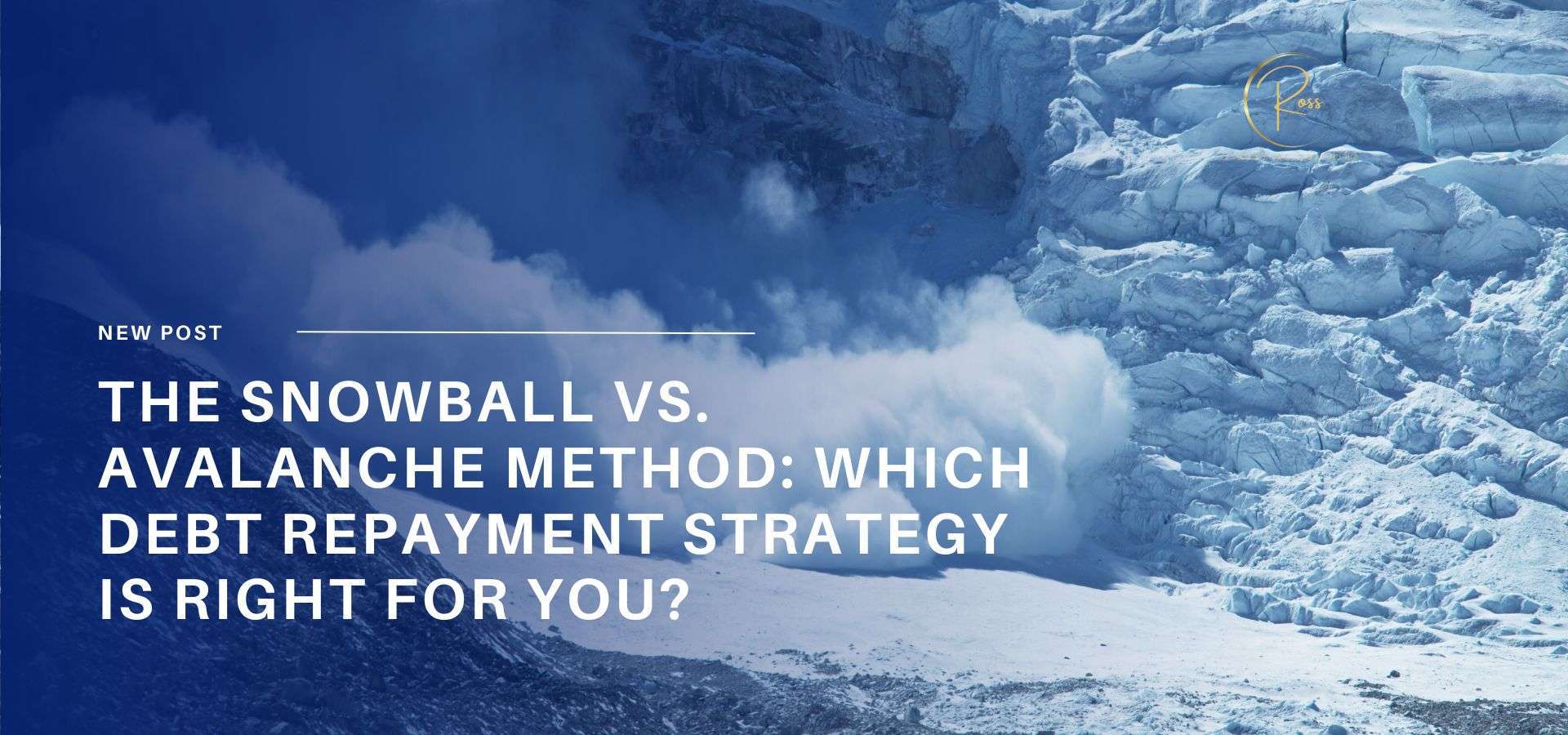
Paying off debt can feel like an overwhelming task, especially when you have multiple loans, credit cards, or financial obligations. Fortunately, there are two popular methods for tackling debt: the Snowball Method and the Avalanche Method. Each approach has its benefits and challenges, and the right one for you depends on your financial situation and personality.
We’ll break down both strategies, helping you decide which method fits your needs and how to implement it effectively.
What Is the Snowball Method?
The Snowball Method is a debt repayment strategy that focuses on paying off your smallest debt balances first, regardless of interest rates. As you pay off smaller debts, you build momentum— much like a snowball rolling downhill and getting bigger as it goes.
Here’s how the Snowball Method works:
- List all of your debts from smallest to largest balance.
- Continue making minimum payments on all of your debts.
- Focus any extra money (such as bonuses, tax refunds, or any savings from cutting expenses) on paying off your smallest debt.
- Once the smallest debt is paid off, roll the payment you were making into the next smallest debt, and repeat the process.
Example:
Let’s say you have the following debts:
- Credit Card 1: $500 balance at 15% interest
- Credit Card 2: $2,000 balance at 20% interest
- Car Loan: $10,000 balance at 5% interest
Using the Snowball Method, you would focus on paying off Credit Card 1 first while making minimum payments on the other debts. Once Credit Card 1 is paid off, you move on to Credit Card 2, and so on.

Advantages of the Snowball Method:
- Psychological Wins: Paying off smaller debts quickly provides a sense of accomplishment and motivation to keep going. This method is great for people who need tangible progress to stay motivated.
- Momentum: Each time you eliminate a debt, the amount of money you can put toward the next debt increases, helping you pay off subsequent debts faster.
Disadvantages of the Snowball Method:
- Interest Costs: Since this method doesn’t consider interest rates, you may end up paying more in interest over time compared to other strategies, especially if your larger debts have high interest rates.

What Is the Avalanche Method?
The Avalanche Method focuses on paying off debts with the highest interest rates first, regardless of the balance. The goal of this strategy is to minimize the amount of interest you pay over time.
Here’s how the Avalanche Method works:
- List all of your debts from the highest interest rate to the lowest.
- Continue making minimum payments on all debts.
- Apply any extra money to the debt with the highest interest rate.
- Once the debt with the highest interest rate is paid off, move on to the debt with the next highest rate, and so on.
Example:
Let’s use the same debts:
- Credit Card 1: $500 balance at 15% interest
- Credit Card 2: $2,000 balance at 20% interest
- Car Loan: $10,000 balance at 5% interest
With the Avalanche Method, you would focus on paying off Credit Card 2 first, because it has the highest interest rate. Once that’s paid off, you would move to Credit Card 1, and finally, the car loan.
Advantages of the Avalanche Method:
- Saves Money on Interest: By focusing on high-interest debts, you’ll reduce the total amount of interest you pay over time. This method is ideal for people who want to pay off their debt as efficiently as possible.
- Faster Payoff on High-Interest Debts: Debts with high interest can grow quickly, so this method helps you tackle the most financially draining debts first.
Disadvantages of the Avalanche Method:
- Slower Progress: Because you focus on the highest interest debt first, you may not see immediate progress if that debt has a large balance. This can be discouraging for some people, especially if they prefer quicker wins to stay motivated.
Which Debt Repayment Strategy Is Right for You?
Deciding between the Snowball and Avalanche methods comes down to your financial priorities and motivation style. Here’s a quick comparison to help you choose:
- Choose the Snowball Method if:
- You need quick, psychological wins to stay motivated.
- You want to see immediate progress by eliminating small debts first.
- You’re comfortable paying slightly more in interest in exchange for visible progress.
Choose the Avalanche Method if:
- Your primary goal is to save the most money on interest.
- You don’t mind starting with larger debts that may take longer to pay off.
- You’re motivated by the financial logic of reducing interest costs over time.
It’s important to note that both methods can work if you stick to them consistently. The key is to choose a strategy that aligns with your personality and financial goals, then commit to it.

How to Implement Your Chosen Strategy
Once you’ve chosen the debt repayment method that works best for you, it’s time to put it into action. Here’s how to get started:
1. List Your Debts:
Create a list of all your debts, including balances, interest rates, and minimum payments.
2. Choose a Method:
Decide whether the Snowball or Avalanche method makes the most sense for your situation.
3. Budget for Extra Payments:
Look for areas in your budget where you can cut back or find ways to increase your income through side hustles or bonuses. Use this extra money to pay down your debt faster.
4. Stay Consistent:
Debt repayment takes time, but consistency is key. Set reminders to review your progress each month and stay motivated by celebrating small victories along the way.
5. Celebrate Milestones:
Whether it’s paying off your first debt using the Snowball Method or eliminating a high-interest loan with the Avalanche Method, take time to celebrate your progress. Reward yourself in a way that aligns with your financial goals.
Conclusion: Taking Control of Your Debt
Both the Snowball and Avalanche methods can help you get out of debt, but the best strategy is the one that keeps you motivated and committed. By choosing a method that fits your personality and financial priorities, you’ll be on the path to financial freedom in no time.
If you’re struggling to figure out the best debt repayment strategy for your situation, I’m here to help. Book a free discovery call today, and together we can create a personalized debt repayment plan that works for you.



